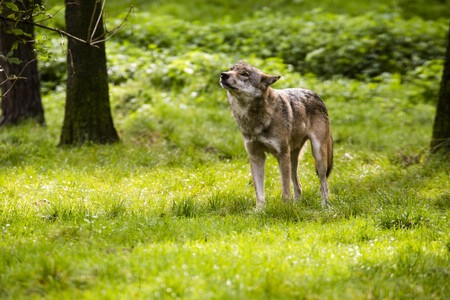The wolf has just seen how his future is complicated in European soil. And not because of pollution, global warming, a new disease that affects herds or the loss of their ecosystem. No. The key is in the EU Official Gazettewhich has just published the directive that degrades the status of protection of the species, passing it from “strictly protected” to only “protected”. Perhaps it sounds like a smaller detail or pure community bureaucracy, but in the case of Spain it will allow hunters to reduce animals throughout the country.
The reason: a chain of legal changes.
What happened? After years of controversy, political anger and a rifirrafe attempt between environmentalists and hunters, over the last months the wolf has seen how cracks opened in the legal armor that protected him from hunters. And the reason must be sought in a series of decisions adopted nationally and community.
In the case of Spain, one of the key steps to reduce the protection of the wolf occurred in March, during the processing of the Food Waste Law in Congress. Now there has been a new step in that same direction, but at the broader level, with a change that has just officialized the EU Official Gazette.
And what change is that? Basically the status of the canis lupus. Instead of being considered a “strictly protected species”, as until now, it appears in the list of “protected”. Without more. It may seem like a small adjustment, but in practice it supposes that the wolf will appear without nuances in the list of animals that “can be subject to management measures.” That is, hunt.
The European Directive was approved a few days ago, on June 17, but has just officially officially in the EU Official Gazetteas eldiario.es has revealed. Again it may seem simple bureaucratic, but it has important repercussions: from now on a period of 20 days opens for the entry into force of the change, so that on July 14 the wolf will have lost its “strictly protected” status.
Is it a novelty? Yes. And no. The change made in the Habitat Directive Earlier this month and its recent publication in “The Community Boe” are important news for its impact, but they will actually surprise few. The wolf’s legal armor has been a reason for debate at European level. The controversy can be traced at least 2022, when the president of the CE, Ursula von der Leyen, lost her favorite pony for the attack of a wolf.
That same year Brussels commissioned an “in -depth analysis” on the increase of the species in the continent thanks to its legal armor against the hunters. What was your conclusion? “The concentration of wolves in some European regions has become a real danger to livestock and, potentially, also for humans,” Von der read in 2023. In the same statement, the EC encouraged local authorities to “take measures when necessary.”


What happened since then? That community machinery has continued working on the subject. At the end of 2024, the Permanent Committee of the Berna Agreement voted in favor of the EU proposal to reduce the status of protection of the wolf, in such a way that it passed from “strictly protected” to only “protected”, and in March the Commission again moved file by proposing that this change was transferred to its directive on habitats, adaptation that received green light this month.
And what happens in Spain? The wolf has not only been the protagonist of community policy. Throughout the last years it has also served to warm the debate in Spain, where environmentalists, hunters or the parliamentary arch itself differs on the degree of protection that the species must enjoy in the Peninsula. Ecologists in action believes for example that authorizing his hunt “turns his back on science.” For the RFF it will help the “coexistence” with the farmers.
With that backdrop, three months ago Congress adopted a series of fundamental measures for the future of the wolf in our country. The most immediate affected the herds located north of the Duero River. The lower house endorsed a change in the royal decree that the Lespre developed to eliminate the protection of animals located in that territory and that the autonomies can decide on their hunt. In practice that meant returning them to the situation in which they were before 2021.
And what happens to the south of the Duero? It is there where there will be news from now on. In March, the Congress opened the door that the protection of the wolf can be reduced to the south of the Duero, but as long as its community protection is reduced before, something that has just been formalized. In this way the species leaves the list of special protection regime also to the south of the Duero River.
Interestingly, the Congress of Deputies made the decision while processed a law on food waste management. The reason: the promoters of the amendment that made possible the change in the statute of the wolf argued that the attacks of the wolves to the cattle generate thousands of kilos of lost meat.
Images | Leopold de Castro (Flickr) 1 and 2
In WorldOfSoftware | We have made the giant wolves return after 10,000 extinct years. The problem is that they “return” may not be the right word












